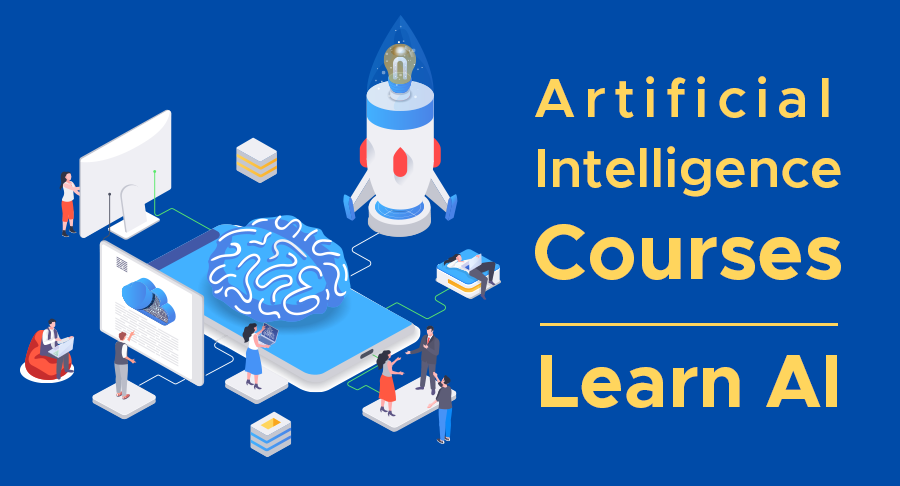Artificial Intelligence (AI) is the simulation of human intelligence in machines that are designed to think and act like humans. AI encompasses a variety of techniques and technologies, including machine learning, deep learning, computer vision, and natural language processing, among others. The goal of AI is to create systems that can perform tasks that typically require human intelligence, such as recognizing speech or images, making decisions, and solving problems.
Machine learning, on the other hand, is a subset of AI that involves training algorithms to make predictions or decisions without being explicitly programmed to do so. It is based on the idea that machines can learn from data, identify patterns and make decisions on their own, instead of relying on hardcoded rules.
There are several different types of machine learning, including supervised learning, unsupervised learning, and reinforcement learning. In supervised learning, the algorithm is trained on labeled data, while in unsupervised learning, the algorithm must find patterns in an unlabeled dataset. Reinforcement learning involves training an agent to make decisions in an environment by performing certain actions and observing the rewards or consequences.
There are hundreds of online ML and AI courses out there, but only a few warrant your attention. This article gives you the highest-rated free courses, helping you start your learning journey on the best footing.
1 – Machine Learning Introduction for Everyone
An introduction to machine learning course is a foundational course for anyone looking to learn about the basics of machine learning. It typically covers the following topics:
- Definition and concepts of machine learning: Introduction to machine learning, types of learning (supervised, unsupervised, reinforcement), and the difference between AI and machine learning.
- Algorithms and models: Overview of commonly used algorithms (linear regression, logistic regression, decision trees, K-Nearest Neighbor, etc.), and the process of training and evaluating machine learning models.
- Data preparation: Cleaning, transforming, and preparing data for use in machine learning algorithms.
- Overfitting and underfitting: Understanding the concepts of overfitting and underfitting, and how to address them in machine learning models.
- Feature selection and engineering: Techniques for selecting relevant features, and creating new features to improve the performance of machine learning models.
- Evaluation metrics: Understanding and using various evaluation metrics (accuracy, precision, recall, F1 score, etc.) to assess the performance of machine learning models.
The course is usually designed for non-technical people and does not require a strong background in mathematics or programming. The goal is to provide a comprehensive overview of the field and help learners understand the basics of machine learning, so they can pursue further studies in the field if they choose to do so.
2 – Machine Learning for Data Science and Analytics
Machine learning for data science and analytics is a course that focuses on the application of machine learning techniques to data science and analytics problems. It is typically designed for data scientists, data analysts, and business professionals who want to use machine learning to solve real-world problems.
The course covers the following topics:
- Introduction to machine learning: Overview of machine learning concepts, algorithms, and models.
- Data preparation: Techniques for cleaning, transforming, and preparing data for use in machine learning algorithms.
- Supervised and unsupervised learning: Overview of supervised learning algorithms (linear regression, logistic regression, decision trees, etc.), and unsupervised learning algorithms (clustering, dimensionality reduction, etc.).
- Model selection and evaluation: Techniques for selecting the best machine learning model for a given problem, and evaluating the performance of models using various evaluation metrics.
- Advanced topics: Overview of advanced topics in machine learning, such as deep learning, reinforcement learning, and neural networks.
The course emphasizes the practical application of machine learning to data science and analytics problems, and provides hands-on experience using machine learning algorithms and tools. The goal is to help learners understand how to use machine learning to extract insights and make data-driven decisions in their work.
3 – Machine Learning with Python: A Practical Introduction
Machine Learning with Python: A Practical Introduction is a course that focuses on the implementation of machine learning algorithms using the Python programming language. It is typically designed for individuals with a basic understanding of programming and some experience with Python who are looking to apply machine learning techniques to real-world problems.
The course covers the following topics:
- Introduction to machine learning: Overview of machine learning concepts, algorithms, and models.
- Data preparation and preprocessing: Techniques for cleaning, transforming, and preparing data for use in machine learning algorithms.
- Supervised and unsupervised learning: Implementation of supervised learning algorithms (linear regression, logistic regression, decision trees, etc.), and unsupervised learning algorithms (clustering, dimensionality reduction, etc.) using the Python programming language.
- Model evaluation and selection: Techniques for selecting the best machine learning model for a given problem, and evaluating the performance of models using various evaluation metrics.
- Advanced topics: Overview of advanced topics in machine learning, such as deep learning, reinforcement learning, and neural networks, and their implementation in Python.
The course emphasizes the practical implementation of machine learning algorithms using Python, and provides hands-on experience with popular Python libraries such as NumPy, Pandas, Matplotlib, and scikit-learn. The goal is to help learners understand how to use Python to build and deploy machine learning models.
4 – Fundamentals of Reinforcement Learning
Fundamentals of Reinforcement Learning is a course that focuses on the basics of reinforcement learning, a type of machine learning where an agent learns to make decisions in an environment by performing certain actions and observing the rewards or consequences. It is typically designed for individuals with a basic understanding of machine learning who are interested in understanding and applying reinforcement learning algorithms.
The course covers the following topics:
- Introduction to Reinforcement Learning: Definition of reinforcement learning, Markov Decision Processes (MDPs), and the reinforcement learning problem.
- The Reinforcement Learning Framework: Overview of the reinforcement learning framework, including the agent, the environment, and the state-action-reward-state-action (SARSA) process.
- Policy and Value Functions: Overview of policy and value functions, including policy iteration, value iteration, and Q-Learning.
- Model-Based Reinforcement Learning: Overview of model-based reinforcement learning, including dynamic programming, Monte Carlo methods, and temporal difference (TD) learning.
- Advanced Topics: Overview of advanced topics in reinforcement learning, such as deep reinforcement learning, multi-agent reinforcement learning, and inverse reinforcement learning.
The course emphasizes the mathematical foundations of reinforcement learning and provides hands-on experience with various reinforcement learning algorithms. The goal is to help learners understand the fundamentals of reinforcement learning and its applications to real-world problems.
5 – BERT Sentiment Analysis On Vertex AI Using TFX
BERT Sentiment Analysis on Vertex AI using TFX is a course that focuses on the use of the BERT (Bidirectional Encoder Representations from Transformers) model for sentiment analysis using Vertex AI and TFX (TensorFlow Extended). It is typically designed for individuals with a basic understanding of machine learning and some experience with TensorFlow who are interested in using the latest state-of-the-art models for sentiment analysis.
The course covers the following topics:
- Introduction to BERT: Overview of the BERT model and its applications in natural language processing.
- Sentiment Analysis: Overview of sentiment analysis, including the definition of sentiment and the types of sentiment analysis problems.
- TFX and Vertex AI: Overview of TFX and Vertex AI, including their components and how they can be used to build, deploy, and serve machine learning models.
- BERT Sentiment Analysis with TFX and Vertex AI: Hands-on implementation of a BERT-based sentiment analysis model using TFX and Vertex AI.
- Model Evaluation and Deployment: Techniques for evaluating the performance of the BERT-based sentiment analysis model and deploying it to production.
The course emphasizes the practical implementation of the BERT model for sentiment analysis using TFX and Vertex AI. The goal is to help learners understand how to use the latest state-of-the-art models and tools to build and deploy sentiment analysis models in a production environment.
We hope you find this list helpful. If you know of another valuable (and free!) Machine Learning or Artificial Intelligence Courses that we’ve missed, let us know as we’d love to add it to our list.





Write a comment
You must be logged in to post a comment.